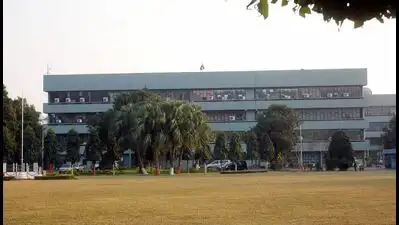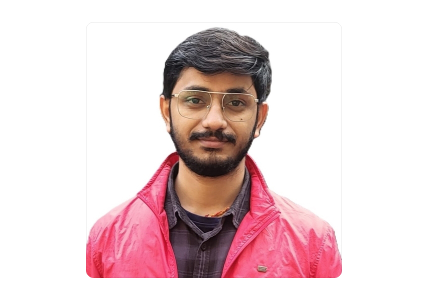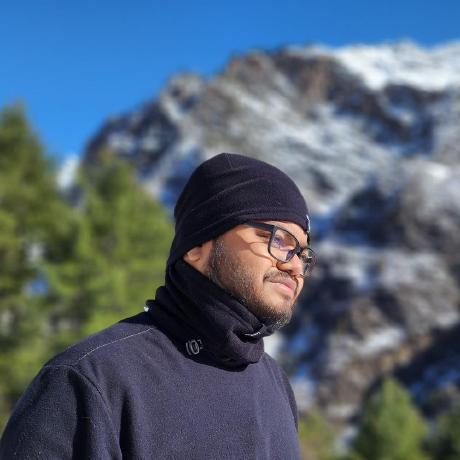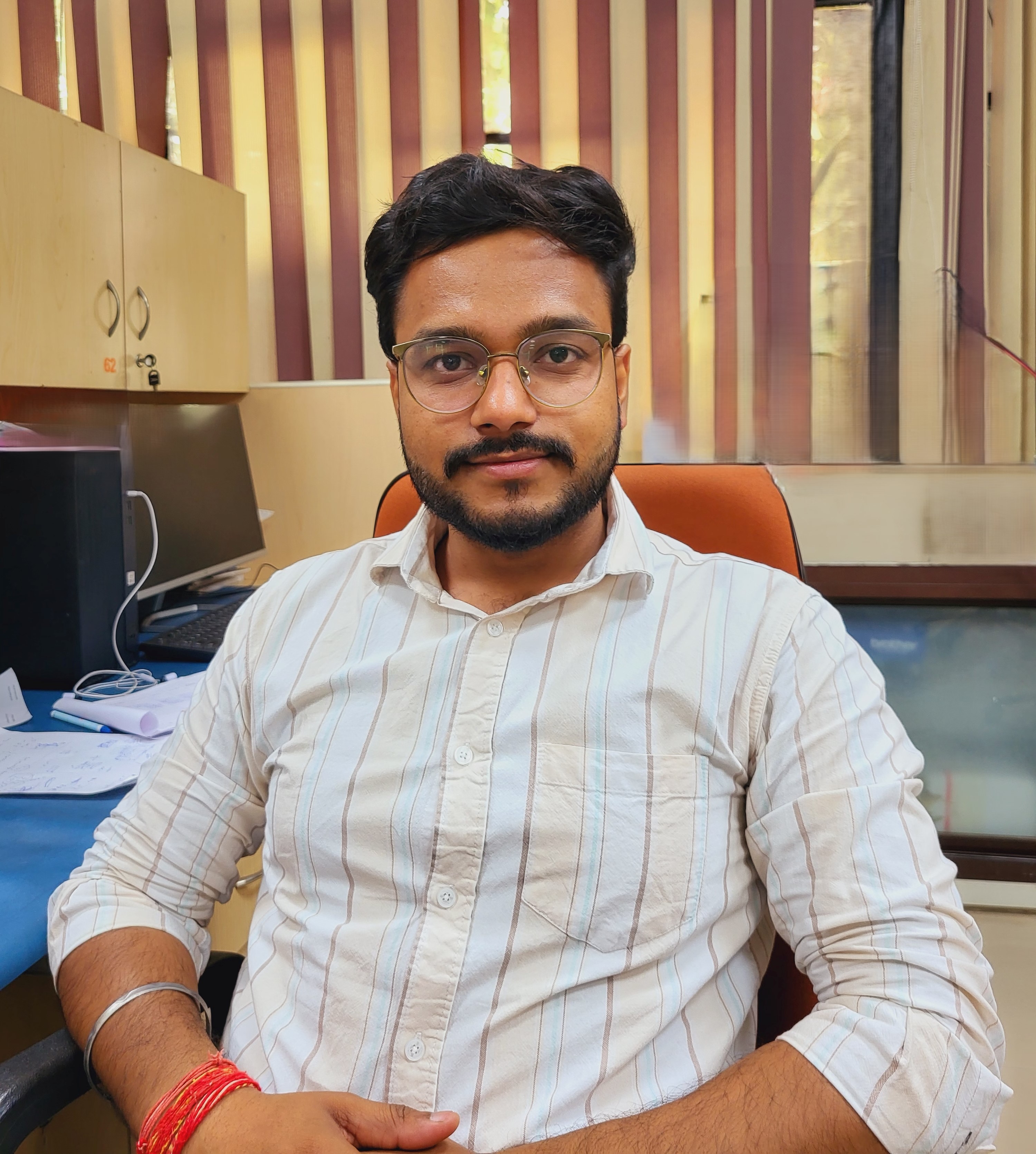

Dr. Ritesh Kumar
Central Scientific Instruments Organisation, CSIR, Chandigarh 160030, (www.csio.res.in) India.
About Us
Hi I'm Ritesh Kumar
working as a Principal Scientist with CSIR-Central Scientific Instruments Organisation Chandigarh.
I'm passionate about Statistical Analysis and Machine Intelligence,responsible for teaching, Data Science and Machine Learning both applications and theory, Data Structures and algorithm analysis,Introduction to computing and Compiler design.
Read MorePublication
PROJECT
PATENTS
AWARDS
Research & Projects
Artificial Intelligence Powered Solutions for Animal Health Analytics
This project aims to leverage the advancement in efficient sensor deployment coupled with artificial intelligence to monitor, analyze and forecast animal health in real-time. We envision that data analytics will play a pivotal role to break past the saturation point of animal management and productivity by developing platforms and algorithms to gather, collate and efficiently visualize the collected data and finally derive actionable insights from the data gathered using machine learning techniques.
Algorithm Development for Bee Detection in Beehives in Indian Scenario
The need for bee detection is two-fold, first it is pertinent for environmental health monitoring and second the traditional methods used by entomologists are time consuming and often not accurate. By using AI, it is possible to train the technology to identify and categorize various insects and bees species through analyzing images or videos of their physical attributes. This has the potential to facilitate swift and precise monitoring of populations in their natural habitats. We envision the following to be the primary objectives of our project:
- To develop algorithms for bees detection in video images with accuracy and speed.
- To develop algorithms for bees activity monitoring.
Understanding Chemical space of odorants
Fragrance and aroma are an essential part of the animal kingdom. Yet, the relationship between the chemical structure of odorants and their percepts remain largely elusive. There are many unanswered questions in this domain in terms of clear identification, differentiation and mathematical definition of the olfactory space. I want to understand the concept of olfactory space, the concept of primaries if at all there is one in this space, and the interaction of physical and receptor space. For this, I intend to use machine learning and neuroscientific techniques. I collaborate with people in neuroscience and mathematics in this research.
Odor Source Localisation Techniques
Odor source localisation has been studied extensively in biology, e.g. moth mate seeking, lobster foraging, mosquito host tracking. Research in autonomous, robotic odor localisation has mimicked these behaviours. It is relevant for detecting wildfires, oil spills, industrial gas leaks, and for search and rescue in disaster management etc. I work on designing better algorithms/techniques using existing hardware and different sensing modalities. I collaborate with people from robotics, sensor development in this area.
Deep Learning for Odor Prediction on Aroma-Chemical Blends
The application of deep-learning techniques to aroma chemicals has resulted in models that surpass those of human experts in predicting olfactory qualities. However, public research in this field has been limited to predicting the qualities of individual molecules, whereas in industry, perfumers and food scientists are often more concerned with blends of multiple molecules. In this paper, we apply both established and novel approaches to a data set we compiled, which consists of labeled pairs of molecules..
Electronic Nose and Tongue system development
I have a keen interest in electronic nose and tongue system development which can be used for various application such as quality quantification of food items and early diagnosis of plant pest attack. I have worked with various companies in this area.
I have also worked on the design of human opinion dynamics based optimization algorithm. This work was published in
Nature, Scientific Reports and the software is open sourced here.Experience
Principal Scientist
Central Scientific Instruments Organisation.
Royal Society Newton Fellow
University of Hertfordshire, UK.
Senior Scientist
Central Scientific Instruments Organisation.
Scientist
Central Scientific Instruments Organisation.
Intern
Citrix R&D India.
Education
Academy of Scientific & Innvovative Research
Academy of Scientific & Innvovative Research
B.E. (CSE)
Founded Projects
| 2024 | Algorithm Development for Bee Detection in Beehives in Indian Scenario | DST-AWaDH-IIT Ropar | PI | Rs. 15 Lakhs | |
|---|---|---|---|---|---|
| 2022 | Artificial Intelligence powered solutions for animal health analytics | DST-AWaDH-IIT Ropar | PI | Rs. 1.06 Crore | |
| 2022 | Objective assessment of Saltiness in Salt and Salt Blends | TATA Consumer Products Ltd., Pune, India | PI | Rs. 13.5 Lakhs | |
| 2021 | Design of food recommender system using machine learning | FoodPairing, Belgium | PI | Rs. 16.9 Lakhs | |
| 2021 | Bitterness Masking evaluation of Green Tea using machine learning | TATA Consumer Prod- ucts Ltd., Pune, India | PI | Rs. 8.5 Lakhs | |
| 2019 | DeepFragrance: Artificial Intelligence Methods for designing fragrant molecules | Royal Society, UK | PI | 100,500 GBP | |
| 2021 | CSIR-Digital Food Safety Portal System 2.0 Digital Food Safety Portal, analytics and Digitalization of the Indian Burden of Foodborne Diseases, Chemicals Risk Assessment as well as food design using Artificial Intelligence and Machine Learning Tools | CSIR, India | Co-PI | Rs. 1.47 Cr | |
| 2018 | Smartphone imaging aided point of care dipstick platform for heavy metals sensing in water | DST, India | Co-PI | Rs. 25 Lakhs | |
| 2015 | Development of Integrated Technological Solutions for Security and Operations based on UV Sensor Technologies | CSIR, NMITLI | Co-PI | Rs. 36 Lakhs | |
| 2012 | Biomimetic Artificial Organoleptic Systems | CSIR, India | Co-PI | Rs. 60 Lakhs | |
| 2020 | Characterizing Risk Indicators to cause Anaemia Prevalence among young Children and Adolescents in BRICS countries using Artificial Intelligence | DST, India | Member | Rs. 48 Lakhs | |
| 2018 | Data logging system for Deg Bhapka process monitor- ing | FFDC, Kannuaj | Member | Rs. 1 Lakh | |
| 2018 | Identification of volatiles released from rancid cashews and their correlation/characterization | nanoPix ISS (P) Ltd., Hubli | Member | Rs. 1.5 Lakhs | |
| 2017 | Upgradation of Existing Iodine Value Meter | M/S Vaisheshika Sys- tems Ltd., Ambala | Member | Rs. 1.36 Lakhs | |
| 2015 | WSN for explosive detection | PSA Office, India | Member | Rs. 60 Lakhs | |
Project Staff & PHD Scholar

Awards
2022 Indian National Academy of Engineers travel award to present work in INAE annual conference at Kolkata.
2020 Royal Society travel fellowship to participate in ECRO–Dresden.
2020 Royal Society travel fellowship to participate in ISOT–Philadelphia.
2019 Royal Society Newton Fellowship (awarded to 40 early career researchers all over the world in an year).
2019 IC2S2 travel fellowship to present research work.
2018 Sakura science exchange fellowship by JST, Japan.
2016 Among the winning teams for grand challenge awarded by IIT Patna (hand held instrument for nitrogen mapping).
2016 Among the winning teams (ViResPred) for presenting work at RECOMB/ISCB Conference by DARPA.
2013 Volkswagen Foundation, Germany sponsorship to present research work at OdorSpaces 2013.
2009 Quick Hire Fellowship for MTech by CSIR, India.
2008 Qualified in Google Code jam.
2002 Ramakrishna Mission Vidyapith scholarship for secondary and senior secondary education.
Publications
- Bhondekar, A. P., R. Kaur, R. Kumar, R. Vig, and P. Kapur (2011). A novel approach using Dynamic Social Impact Theory for 1. Bhondekar, A. P., R. Kaur, R. Kumar, R. Vig, and P. Kapur (2011). A novel approach using Dynamic Social Impact The- ory for optimization of impedance-Tongue (iTongue). Chemometrics and Intelligent Laboratory Systems 109(1), 65 – 76.
- Kaur, R., R. Kumar, A. Gulati, C. Ghanshyam, P. Kapur, and A. P. Bhondekar (2012). Enhancing electronic nose perfor- mance: A novel feature selection approach using dynamic social impact theory and moving window time slicing for classification of Kangra orthodox black tea (Camellia sinensis (L.) O. Kuntze). Sensors and Actuators B: Chemical 166, 309 – 319.
- Kumar, R., A. P. Bhondekar, R. Kaur, S. Vig, A. Sharma, and P. Kapur (2012). A Simple Electronic Tongue. Sensors and Actuators B: Chemical.
- kumar, R., R. Kaur, and A. P. Bhondekar (2012). SITO LIBRARY https://mloss.org/software/view/457/.
- Saurabh, S. and R. Kumar (2012). Global reduction in measles mortality(Correspondence). The Lancet 380(9850), 1303.
- Kaur, R., R. Kumar, A. P. Bhondekar, and P. Kapur (2013). Human opinion dynamics: An inspiration to solve complex optimization problems. Scientific reports 3(1), 1–7.
- Kumar, R., R. Kaur, A. P. Bhondekar, and P. Kapur (2014). Understanding the odour network. Flavour 3(Suppl 1), P7.
- Macaš, M., A. P. Bhondekar, R. Kumar, R. Kaur, J. Kuzilek, V. Gerla, L. Lhotská, and P. Kapur (2014). Binary social im- pact theory based optimization and its applications in pattern recognition. Neurocomputing 132, 85–96.
- Kaur, R., R. Kumar, A. P. Bhondekar, R. Suzuki, and T. Arita (2015). Effects of Topological Variations on Opinion Dy- namics Optimizer. In: International Conference in Swarm Intelligence. Springer, Cham, pp.3 – 13.
- Kumar, R., R. Kaur, B. Auffarth, and A. P. Bhondekar (2015). Understanding the Odour Spaces: A Step towards Solving Olfactory Stimulus-Percept Problem. PLoS ONE 10(10).
- Kumar, R., R. Kaur, and A. P. Bhondekar (2015). “The Smell Network”. In: Multidisciplinary Social Networks Research Communications in Computer and Information Science, (http://link.springer.com/chapter/10.1007%2F978-3-662-48319-0_38). Vol. 540. Springer Berlin Heidelberg, pp.460 – 469.
- Sarkar, S. T., A. P. Bhondekar, M. Macaš, R. Kumar, R. Kaur, A. Sharma, A. Gulati, and A. Kumar (2015). Towards bio- logical plausibility of electronic noses: A spiking neural network based approach for tea odour classification. Neural Networks 71, 142 – 149.
- Sharma, G., S. Kumar, A. Kumar, A. Sharma, R. Kumar, R. Kaur, and A. P. Bhondekar (2015). Development of lipid membrane based taste sensors for electronic tongue. Procedia Computer Science 70, 146 – 152.
- Bhardwaj, N., R. Kumar, R. Verma, A. Jindal, and A. P. Bhondekar (2016). Decoding algorithm for color QR code: a mobile scanner application. In: 2016 international conference on recent trends in information technology (ICRTIT). IEEE, pp.1 – 6.
- Chaudhary, K., R. Kumar, S. Singh, A. Tuknait, A. Gautam, D. Mathur, P. Anand, G. C. Varshney, and G. P. Raghava (2016). A web server and mobile app for computing hemolytic potency of peptides. Scientific reports 6(1), 1 – 13.
- Chowdhury, S. R., R. Kumar, R. Kaur, A. Sharma, and A. P. Bhondekar (2016). Quality assessment of engine oil: an impedance spectroscopy based approach. In: 2016 IEEE Uttar Pradesh Section International Conference on Electrical, Computer and Electronics Engineering (UPCON). IEEE, pp.608 – 612.
- Kumar, R., R. Kaur, A. P. Bhondekar, and G. P. S. Raghava (2016). SMELL AND LANGUAGE: DATACENTRIC APPROACH TO PREDICTING SMELL OF A MOLECULE. Journal of Digital Olfaction Society 4(1).
- Kumar, S., S. Bagchi, S. Prasad, A. Sharma, R. Kumar, R. Kaur, J. Singh, and A. P. Bhondekar (2016). Bacteriorhodopsin–ZnO hybrid as a potential sensing element for low-temperature detection of ethanol vapour. Beilstein journal of nanotechnology 7(1), 501 – 510.
- Bhalla, S., K. Chaudhary, R. Kumar, M. Sehgal, H. Kaur, S. Sharma, and G. P. Raghava (2017). Gene expression-based biomarkers for discriminating early and late stage of clear cell renal cancer. Scientific reports 7(1), 1–13.
- Keller, A., R. C. Gerkin, Y. Guan, A. Dhurandhar, G. Turu, B. Szalai, J. D. Mainland, Y. Ihara, C. W. Yu, R. Wolfinger, R. Kumar, et al. (2017). Predicting human olfactory perception from chemical features of odor molecules. Science 355(6327), 820–826.
- Sinha, A., R. Kaur, R. Kumar, and A. Bhondekar (2017). A cooperative control framework for odor source localization by multi-agent systems.
- Sinha, A., R. Kaur, R. Kumar, and A. P. Bhondekar (2017). Cooperative control of multi-agent systems to locate source of an odor. arXiv preprint arXiv:1711.03819.
- Chowdhury, S. R., A. P. Bhondekar, R. Kumar, S. Bagchi, R. Kaur, and V. Karar (2018). Circuit arrangement to suppress crosstalk in chemo-resistive sensor arrays. IET Science, Measurement & Technology 12(8), 1039 – 1046.
- Fourati, S., A. Talla, M. Mahmoudian, J. G. Burkhart, R. Klén, R. Henao, T. Yu, Z. Aydın, K. Y. Yeung, M. E. Ahsen, R. Kumar, et al. (2018). A crowdsourced analysis to identify ab initio molecular signatures predictive of susceptibility to viral infection. Nature communications 9(1), 1–11.
- Gaurav, K., A. Kumar, R. Kumar, and A. P. Bhondekar (2018). Exploring robot behavior in search of a chemical source. In: 2018 International Conference on Intelligent Autonomous Systems (ICoIAS). IEEE, pp.146 – 149.
- Kumar, A., J. Saxena, R. Kumar, and R. Kaur (2018). MAI Mitigation in MC-CDMA Systems Using Social Impact Based Wireless Communication Algorithm. Wireless Personal Communications 101(3), 1765 – 1786.
- Kumar, R., R. Kaur, A. P. Bhondekar, and G. P. Raghava (2018). “Human Opinion Inspired Feature Selection Strat- egy for Predicting the Pleasantness of a Molecule”. In: Advanced Computational and Communication Paradigms. Springer, pp.197 – 205.
- Kumar, R. and M. Schmuker (2019). DeepFragrance a peek into the olfactory chemical space. In: ECRO 2019, Trieste - Italy. https://www.ecro.online/app/download/9978832670/ECRO2019_Book%20of . . .
- Sinha, A., R. Kumar, R. Kaur, and A. P. Bhondekar (2019). Consensus-Based Odor Source Localization by Multiagent Systems. IEEE Transactions on Cybernetics 49(12), 4450 – 4459. . .
- Sinha, A., R. Kumar, R. Kaur, and R. K. Mishra (2019). Consensus-Based Odor Source Localization by Multiagent Sys- tems Under Resource Constraints. IEEE transactions on cybernetics 50(7), 3254–3263. . .
- Chowdhury, S. R., A. P. Bhondekar, R. Kumar, S. Bagchi, R. Kaur, and V. Karar (2020). Analysis of a Novel Circuit Ar- rangement to Suppress Crosstalk in 2-D Resistive Sensor Arrays. Circuits, Systems, and Signal Processing 39(3), 1227 – 1243.
- Kumar, R., R. Kaur, and M. Schmuker (2020a). DeepFragrance: An embedding based approach to solve olfactory stimulus percept problem. In: ISOT, Achems 2020.
- Kumar, R., R. Kaur, and M. Schmuker (2020b). DeepFragrance: Embedded molecular representations for searching fragrance-like molecules. In: ECRO 2020.
- Parma, V., K. Ohla, M. G. Veldhuizen, M. Y. Niv, C. E. Kelly, A. J. Bakke, K. W. Cooper, C. Bouysset, N. Pirastu, M. Dibat- tista, R. Kumar, et al. (2020). More than smell—COVID-19 is associated with severe impairment of smell, taste, and chemesthesis. Chemical Senses 45(7), 609–622.
- Saurabh, S., R. Kumar, M. K. Gupta, P. Bhardwaj, V. L. Nag, M. K. Garg, and S. Misra (2020). Prolonged persistence of SARS-CoV-2 in the upper respiratory tract of asymptomatic infected individuals. QJM: An International Journal of Medicine 113(8), 556–560.
- Saurabh, S., R. Kumar, N. Kumar, P. Bhardwaj, V. L. Nag, M. K. Garg, and S. Misra (2020a). Dynamics of SARS-CoV-2 transmission among evacuees quarantined at Jaisalmer, India.
- Saurabh, S., R. Kumar, N. Kumar, P. Bhardwaj, V. L. Nag, M. K. Garg, and S. Misra (2020b). Dynamics of SARS-CoV-2 transmission among Indian nationals evacuated from Iran. Disaster medicine and public health preparedness, 1–7.
- Adhikari, P., R. Kumar, S. Iyengar, and R. Kaur (2021). What a million Indian farmers say?: A crowdsourcing-based method for pest surveillance. In: Proceedings of KDD Workshop on Data-driven Humanitarian Mapping, 27th ACM SIGKDD Conference, New York, USA.
- Gopalakrishnan, K., A. Sharma, N. Emanuel, P. K. Prabhakar, and R. Kumar (2021). Sensors for Non-Destructive Qual- ity Evaluation of Food. Food Chemistry: The Role of Additives, Preservatives and Adulteration, 397–449.
- Kumar, R., M. Singh, P. Singh, V. Parma, K. Ohla, S. B. Olsson, V. Saini, J. Rani, K. Kishore, P. Kumari, et al. (2021). Leveraging machine learning and self-administered tests to predict COVID-19: An olfactory and gustatory dysfunc- tion assessment through crowd-sourced data in India. medRxiv.
- Parma, V., K. Ohla, M. G. Veldhuizen, M. Y. Niv, C. E. Kelly, A. J. Bakke, K. W. Cooper, C. Bouysset, N. Pirastu, M. Dibat- tista, et al. (2021a). Corrigendum to: More Than Smell—COVID-19 Is Associated With Severe Impairment of Smell, Taste, and Chemesthesis. Chemical Senses 46.
- Parma, V., K. Ohla, M. G. Veldhuizen, M. Y. Niv, C. E. Kelly, A. J. Bakke, K. W. Cooper, C. Bouysset, N. Pirastu, M. Dibat- tista, et al. (2021b). Erratum: More Than Smell-COVID-19 Is Associated with Severe Impairment of Smell, Taste, and Chemesthesis (Chemical Senses (2020. Chemical Senses 46.
- Kumar, V., S. Patel, S. Sharma, R. Kumar, and R. Kaur (2022). Fifty Years of Cervical Myelopathy Research: Results from a Bibliometric Analysis. Asian Spine Journal.
- Suhag, R., R. Kumar, A. Dhiman, A. Sharma, P. K. Prabhakar, K. Gopalakrishnan, R. Kumar, and A. Singh (2022). Fruit peel bioactives, valorisation into nanoparticles and potential applications: A review. Critical Reviews in Food Science and Nutrition, 1–20.
- . Sisson, L., A. B. Aryan, M. Sharma, and R. Kumar (2023). Olfactory Label Prediction on aroma-chemical Pairs. arXiv preprint arXiv:2312.16124v2.
- Amafabia, D., L. Asimea, J. Bally, A. Baran, A. Boies, A. Borjali, C. Bosomworth, B. Burningham, N.-A. Chaliasou, Y. K.CHEN, et al. (2022). Proceedings of Abstracts, School of Physics, Engineering and Computer Science Research Conference 2022.
- Patel, S., V. Kumar, R. Kumar, S. Sharma, R. Sharma, R. Kaur, and P. Kumar (2022). Trends of the publications of platelet-rich plasma use in osteoarthritis knee–A PubMed and Scopus bibliometric analysis. Journal of Arthroscopic Surgery and Sports Medicine 3(2), 101–110.
- Sharma, A., A. D. Tiwari, M. Kumari, N. Kumar, V. Saxena, and R. Kumar (2022). Artificial intelligence-based prediction of lycopene content in raw tomatoes using physicochemical attributes. Phytochemical Analysis.
- Barsainyan, A. A., R. Kumar, P. Saha, and M. Schmuker (2023). Open Source Principal Odor Map paperhttps://github.com/riteshcanfly/openpom.
- Sharma, A., R. Kumar, N. Kumar, K. Kaur, V. Saxena, and P. Ghosh (2023). Chemometrics driven portable Vis-SWNIR spectrophotometer for non-destructive quality evaluation of raw tomatoes. Chemometrics and Intelligent Laboratory Systems 242, 105001.
- Koyama, S., P. V. Joseph, V. D. Shields, T. Heinbockel, P. Adhikari, R. Kaur, R. Kumar, R. Alizadeh, S. Bhutani, O. Calcinoni, et al. (2024). Possible roles of phytochemicals with bioactive properties in the prevention of and recovery from COVID-19. Frontiers in Nutrition 11, 1408248.
- Sharma, A., J. Nagarajan, K. Gopalakrishnan, V. Bodana, A. Singh, P. K. Prabhakar, R. Suhag, and R. Kumar (2023). “Nanotechnology applications and implications in food industry”. In: Nanotechnology Applications for Food Safety and Quality Monitoring. Elsevier, pp.171–182.
- Kaur, R., S. Zhang, B. Berwal, S. Ray, R. Kumar, and L. R. Varshney (2024). From Phytochemicals to Recipes: Health Indications and Culinary Uses of Herbs and Spices. arXiv preprint arXiv:2410.17286.
- Sharma, A., R. Kumar, N. Kumar, and V. Saxena (2024). Machine learning driven portable Vis-SWNIR spectrophotometer for non-destructive classification of raw tomatoes based on lycopene content. Vibrational Spectroscopy 130, 103628.
- Sharma, M., S. Balaji, P. Saha, and R. Kumar (2025). Navigating the Fragrance space Via Graph Generative Models And Predicting Odors. arXiv preprint arXiv:2501.18777.
- Sisson, L., A. A. Barsainyan, M. Sharma, and R. Kumar (2025). Deep Learning for Odor Prediction on Aroma-Chemical Blends. ACS omega.
Contact
Address
CSIR-Central Scientific Instruments Organisation(CSIO), Sector 30, Chandigarh
Call Us
01722672418
Email Us
riteshkr@csio.res.in



